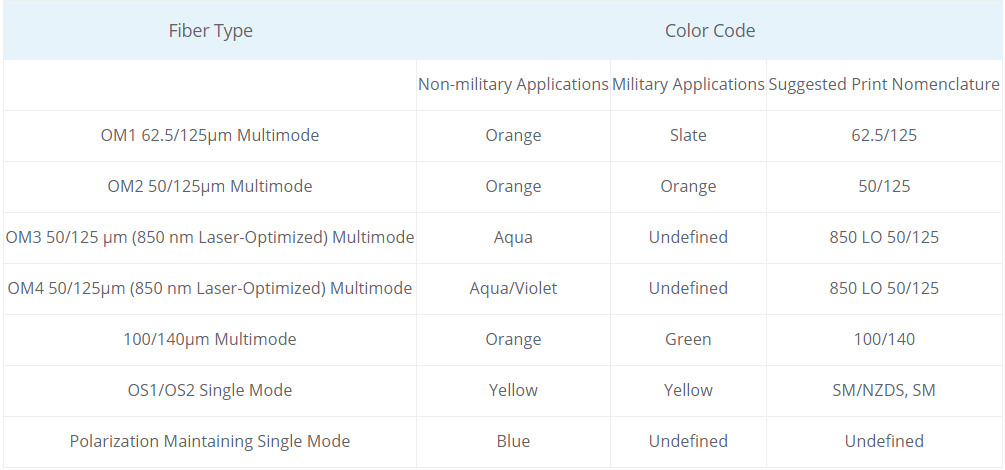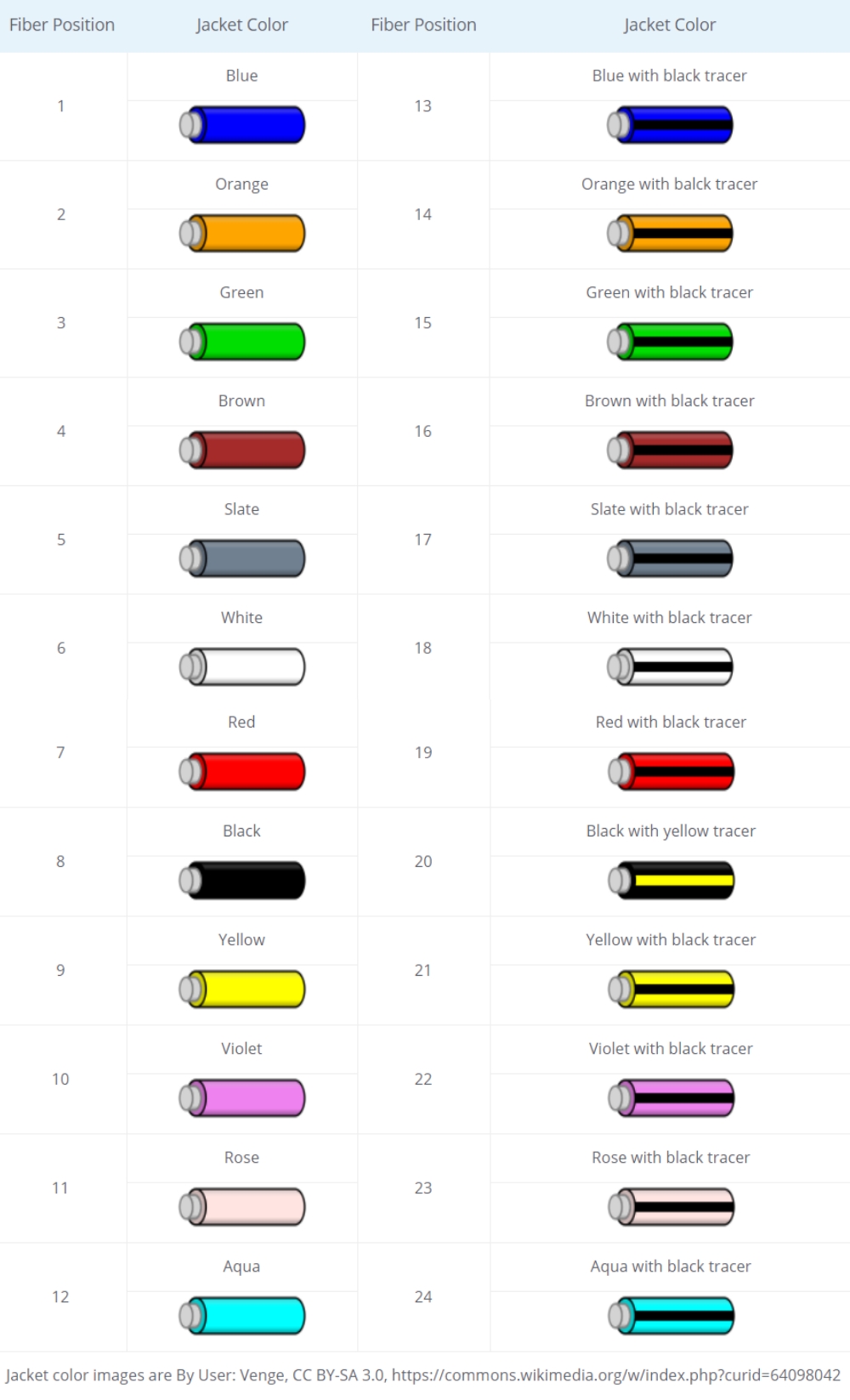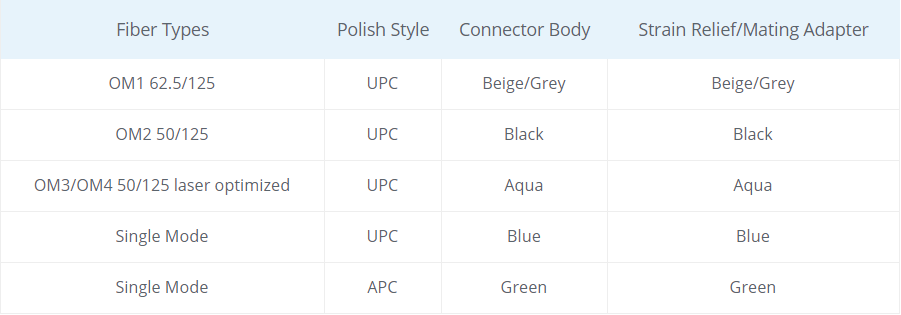Fiber patch cord, often called fiber patch cable or fiber jumper, is a fiber optic cable terminated with fiber optic connectors (LC, SC, MTRJ, ST etc.) at each end. Fiber patch cord can be classified into various types based on different standards, such as fiber cable mode, transmission mode, jacket type, connector type and polishing type. And fiber patch cord plays an important role in server rooms and data centers. Well, it is not unusual for us to mix up so many types of fiber patch cables. Fortunately, fiber patch cord color code could help us identify a fiber patch cable from its jacket, buffer, tube, connector, etc.
Fiber Patch Cord Color Code for Outer Jacket
Colored outer jackets or print might be used on premises fiber cables like fiber patch cord. And there is a color code standard: EIA/TIA-598, which defines the jacket color codes for different fiber types. The colors don’t only apply for the application though, they also are meant to be of use in determining a cables properties. The differences in colors are based on different levels of OM and OS fiber (Optical Multimode & Optical Singlemode). In addition, for optical fiber cable that contains only one type of fiber we can easily identify it by its jacket color. Unless otherwise specified, the outer jacket of premises cable containing more than one fiber type shall use a printed legend to identify the quantities and types of fibers within the cable. For example, “12 Fiber 8 x 50/125, 4 x 62.5/125.” Here are the jacket color codes for different fiber types:

Fiber Patch Cord Color Code for Inner Cable Organization
Fiber patch cord is separated into strands, which are the individual fibers within the out jacket. According to EIA/TIA-598, inner fibers are color coded in a group of 12 fibers and they are counted in a clockwise direction. Up to 24 individual strands can be manufactured loosely, and after that point, they are usually sectioned into tubes containing 12 each. So there are two situations for multi-fiber patch cords:
- For cables that consist of multiple buffer tubes each with 12 or fewer strands. Each tube will be numbered or colored following the same fiber color code.
- For cables that have over 12 strands, the color code repeats itself. Each 12-strand group is identified in some other unique way such as adding a stripe or some other specific marks to the new group.

Fiber Patch Cord Color Code for Connector
Connector color code is also a part of the fiber patch cord color code. Because there are different polish styles of fiber end-face, the connectors of the fiber patch cord are color coded for identification. LC fiber is one of the most commonly used fiber optic patch cords and the LC fiber connector is not hard to be color coded luckily. However, with the advent of metallic connectors like the FC and ST, connector color coding becomes difficult. Therefore, colored strain relief boots or shells are also used. The boot color may vary among manufacturers.

Conclusion
Fiber patch cord color code assists us in distinguishing fiber patch cable types visibly from the colored fiber jacket, fiber connector, fiber boot, etc. What’s more, fiber color coding can be widely applied in identifying optical fiber types and is also practical for fiber optic engineering. FS.COM offers a broad range of standard fiber patch cord types. If you want to know more about fiber patch cord, kindly contact sales@fs.com for more details.




